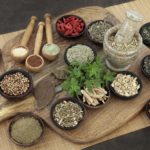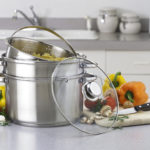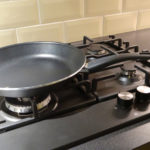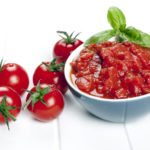Cooking With Spices: Mint
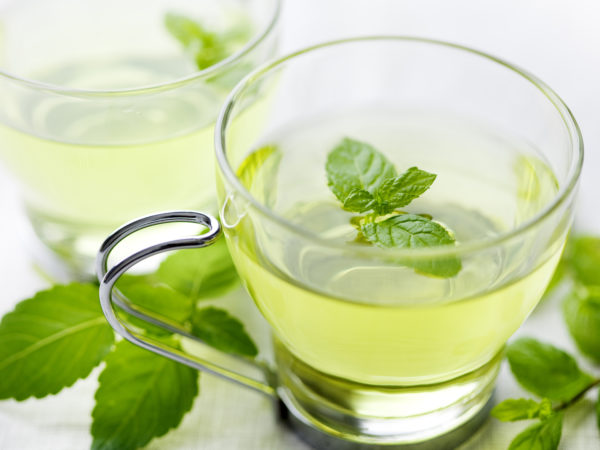
Mint (Mentha) is a perennial herb indigenous to Europe that has spread worldwide, with over 25 different species across the globe. The two most common varieties are peppermint (Mentha aquatic) and spearmint (Mentha spicata). Peppermint is a natural hybrid of spearmint. It is more potent, containing the aromatic oil menthol, whereas spearmint contains a similar but weaker chemical, carvone. This is why peppermint is associated with culinary and medicinal use, while spearmint is typically used only as a flavoring in simple ingestibles such as gums and candies.
The two varieties can be distinguished by their leaves: peppermint has greenish-purple leaves that are lance-shaped, while spearmint’s rounder leaves are a gray-green color. They also have different tastes: peppermint is sharp and strong, spearmint is cool and sweet.
Prized since antiquity, Greek myth describes a nymph (Minthe) who was transformed into a mint plant, with a sweet smell to please the senses. Mint remains one of the most popular “perfuming” herbs; its distinctive scent is known as a welcoming or hospitality gesture in various cultures. It continues to be used in temples and homes as a “strewing” herb to help clear the air.
Medicinally, peppermint addresses a variety of health concerns. Because oil of peppermint contains a high percentage of stomach-soothing menthol (up to 78 percent), it is commonly used to address digestive concerns. It is especially useful for treating issues of the upper GI tract, such as heartburn, nausea and indigestion. It is also helpful in addressing issues with the lower GI tract, especially irritable bowel syndrome (IBS). When using peppermint for IBS, choose enteric-coated capsules, as they pass into the intestinal intact, releasing their contents once there. It is important to note that peppermint can worsen the symptoms of gastroesophageal reflux disease, or GERD as it relaxes the lower esophageal sphincter. Avoid peppermint if you have heartburn along with GERD.
Oil of peppermint has also been used to stop the growth of bacterial, viral and fungal infections, and to address asthma, sinusitis, allergy-related colds and other respiratory issues. It can also be used to calm muscle spams and cramping, especially in the gut: peppermint oil can be an effective and safe way to control intestinal pain during colonoscopies.
In Arurvedic medicine, peppermint has been used as a stimulant and to help clear the mind and promote emotional harmony. It is a popular sleep aid, especially when drunk in tea form.
Peppermint and spearmint are also known for their breath-freshening properties – leading to the abundance of mint-flavored gums. To get the natural benefits of mint, you can chew on mint leaves after eating or make a mouthwash by boiling water with mint leaves. Chill, then strain and keep refrigerated.
Nutritionally, peppermint and spearmint are good sources of vitamins A and C, along with manganese, and copper.
Dr. Weil’s take:
Both peppermint and spearmint leaves are available year-round, and can be used during any season in food and beverages. Fresh mint is the best as it provides more flavor. My gardens always feature stands of spearmint, peppermint or both. Look for leaves that are brightly colored, and store them in a plastic bag containing a damp paper towel that loosely holds the leaves. They should keep for a several days.
Some traditional ways to use mint include as tisanes (herbal teas), mint leaves chopped in yogurt as a dip, tossed into fresh fruit or vegetable salads, muddled and added to drinks, or in ice cream.
You can also boil the leaves with honey or maple syrup and water to create a mint syrup. Mint can be a nice replacement for basil in pesto dishes and to top a Caprese salad.
Learn more about mint:


